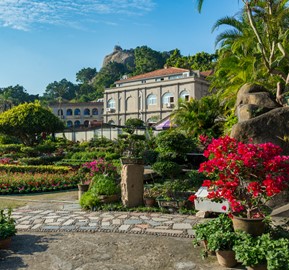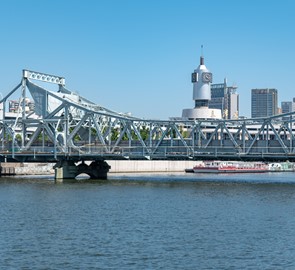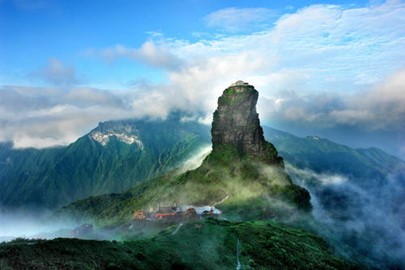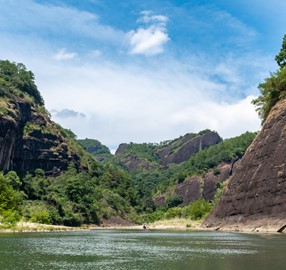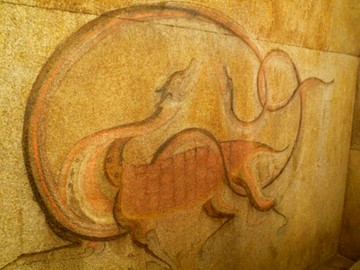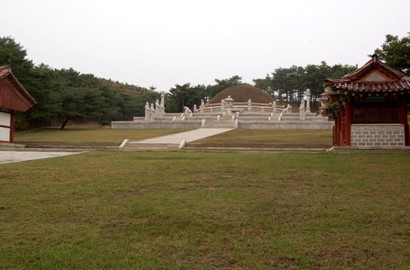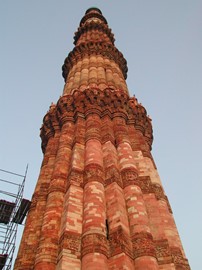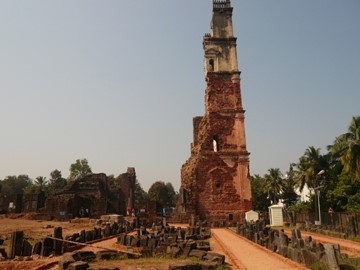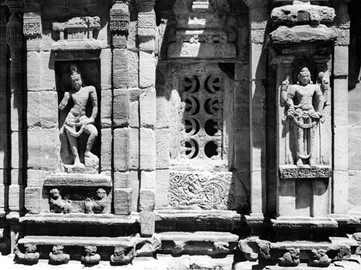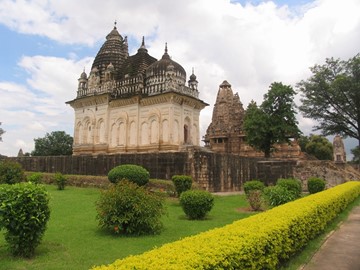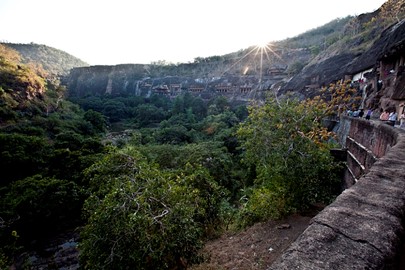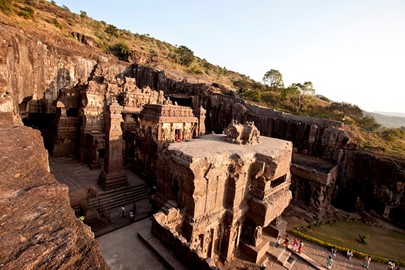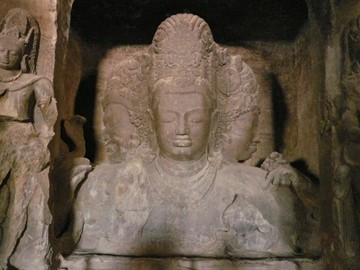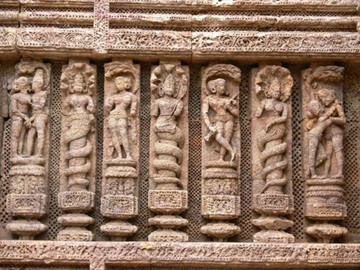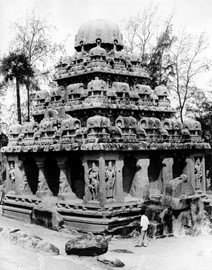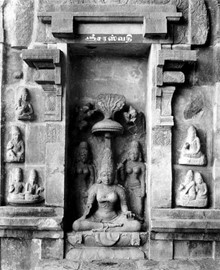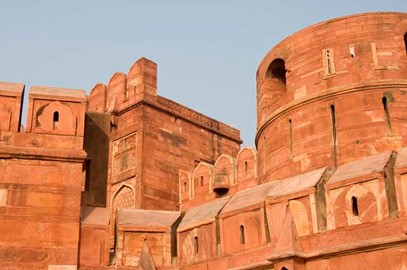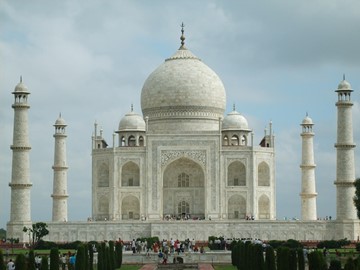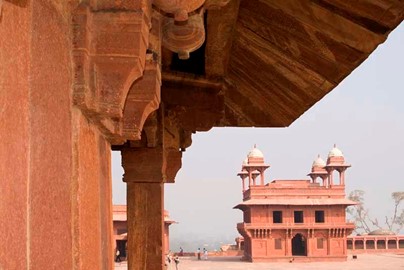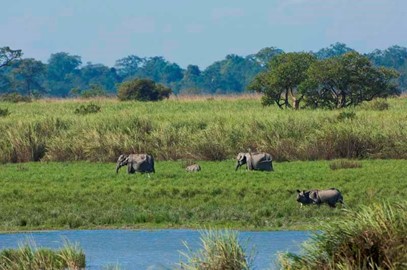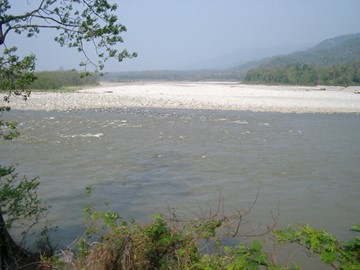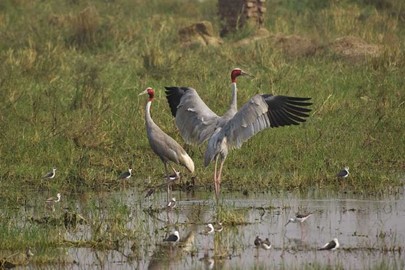region :: asia and the pacific
Kulangsu
Kulangsu, a UNESCO World Heritage site in China, is a historic island blending Chinese and colonial architecture from the 19th and early 20th centuries. Known for its car-free streets, Victorian-style buildings, and serene gardens, it reflects a unique cultural fusion from its past as an international settlement. This charming site preserves a legacy of global exchange and architectural beauty.
Grand Canal
The Grand Canal, a UNESCO World Heritage site in China, is an ancient engineering marvel stretching over 1,700 kilometers, connecting major rivers and cities. Constructed starting in the 5th century BC and expanded over centuries, it served as a vital transportation and trade route, facilitating cultural exchange and economic growth. Today, this intricate system of waterways, bridges, and locks stands as a testament to human ingenuity and historical significance.
Fanjingshan
Fanjingshan, a UNESCO World Heritage site in China, is renowned for its unique biodiversity and striking geological formations. This sacred mountain hosts rare species like the Guizhou snub-nosed monkey and ancient fir trees, thriving in its misty, subtropical climate. Its dramatic peaks, including the iconic Red Cloud Golden Summit, attract visitors for both their natural beauty and spiritual significance tied to Buddhist heritage.
Mount Wuyi
Mount Wuyi, a UNESCO World Heritage site in China, is a stunning landscape of jagged peaks, winding rivers, and lush forests, revered for its natural and cultural significance. Home to ancient tea plantations, cliffside temples, and rare wildlife, it reflects a harmonious blend of Taoist heritage and biodiversity. This scenic marvel has inspired Chinese art and philosophy for centuries.
Koguryo Tombs
The Complex of Koguryo Tombs, a UNESCO World Heritage site in Korea, is a collection of ancient burial sites from the Koguryo Kingdom, dating back to the 1st century BCE to 7th century CE. Adorned with vivid murals depicting daily life and mythology, these stone tombs showcase exceptional artistry and architectural skill. This site offers a rare window into an influential early East Asian civilization.
Kaesong
Kaesong, a UNESCO World Heritage site in Korea, is a historic city renowned for its well-preserved cultural and architectural legacy. It served as the capital of the Koryo Dynasty (918–1392), showcasing traditional Korean urban planning, ancient palaces, and tombs. The site includes notable landmarks like the Kaesong Namdae Gate and the Koryo Museum, reflecting its significance as a center of trade, education, and ginseng production. Recognized by UNESCO in 2013, Kaesong offers a glimpse into Korea’s rich m... Read More
Levuka
Levuka, a UNESCO World Heritage site in Fiji, is a historic port town founded in the early 19th century, celebrated for its well-preserved colonial architecture and cultural significance. Once Fiji’s first capital under British rule from 1874 to 1882, it features quaint buildings along a beachfront, blending European and indigenous influences. Recognized in 2013, this rare example of a 19th-century Pacific settlement reflects a unique fusion of local traditions and colonial power.
Qutb Minar
Qutb Minar, a UNESCO World Heritage Site in India, is an iconic 13th-century victory tower standing as one of the tallest brick minarets in the world. Built by Qutb-ud-din Aibak, the founder of the Delhi Sultanate, it showcases intricate Indo-Islamic architecture with detailed carvings and inscriptions. The site also includes historic structures like the Quwwat-ul-Islam Mosque and the Iron Pillar, reflecting a blend of cultural influences. It remains a significant monument, symbolizing India's rich medieval... Read More
Churches and Convents of Goa
The Churches and Convents of Goa, a UNESCO World Heritage site, showcase an exceptional blend of Indian and Portuguese architectural styles from the 16th and 17th centuries. These historic structures, built during the Portuguese colonial era, reflect the spread of Christianity and include notable examples like the Basilica of Bom Jesus, which houses the relics of St. Francis Xavier. Recognized for their cultural and historical significance, they stand as enduring symbols of religious and artistic heritage.
Pattadakal
Pattadakal, a UNESCO World Heritage site in India, is renowned for its exquisite group of 8th-century monuments showcasing a fusion of North and South Indian architectural styles. This historic complex, built during the Chalukya dynasty, features intricately carved temples and shrines, with the Virupaksha Temple as its centerpiece, reflecting the era's religious harmony and artistic mastery. The site serves as a testament to India's rich cultural heritage and ancient craftsmanship.
Khajuraho
Khajuraho, a UNESCO World Heritage site in India, is renowned for its stunning group of Hindu and Jain temples built between the 9th and 11th centuries by the Chandela dynasty. These temples are celebrated for their intricate carvings, including detailed erotic sculptures, which showcase exceptional architectural brilliance and artistic mastery. Originally consisting of over 85 temples, around 25 well-preserved structures remain today, attracting visitors worldwide for their historical and cultural signific... Read More
Ajanta Caves
The Ajanta Caves, a UNESCO World Heritage site in India, are a remarkable collection of ancient rock-cut Buddhist monuments dating from the 2nd century BCE to the 6th century CE. Renowned for their exquisite paintings and sculptures, these caves showcase a fusion of artistic and architectural brilliance, depicting Buddhist religious themes and narratives. Discovered in 1819, the site comprises 30 caves, including monastic halls and sanctuaries, offering a glimpse into India’s rich cultural and spiritual his... Read More
Ellora Caves
The Ellora Caves, a UNESCO World Heritage site in India, are a remarkable complex of rock-cut temples and monasteries dating from the 6th to 10th centuries CE. Carved into a basalt cliff, this site features 34 caves showcasing a blend of Buddhist, Hindu, and Jain artistry, with intricate sculptures, towering pillars, and detailed reliefs. Highlights include the grand Kailasa Temple, an architectural marvel dedicated to Lord Shiva, reflecting the skill and devotion of ancient artisans. Ellora stands as a tes... Read More
Elephanta Caves
The Elephanta Caves, a UNESCO World Heritage site in India, are a remarkable collection of rock-cut temples dating back to the 5th to 8th centuries. These ancient caves, primarily dedicated to Lord Shiva, showcase intricate carvings, sculptures, and architectural brilliance, reflecting the rich cultural and religious heritage of the period. The site is a testament to India's historical artistry and spiritual traditions, attracting visitors and scholars worldwide.
Sun Temple
The Sun Temple at Konârak, a UNESCO World Heritage site in India, is a 13th-century architectural marvel dedicated to the Hindu sun god, Surya. Built by King Narasimhadeva I of the Eastern Ganga dynasty, this temple is renowned for its intricate stone carvings and colossal chariot design, featuring 24 elaborately carved wheels and seven horses. It stands as a testament to ancient Indian craftsmanship and astronomical knowledge, drawing global admiration for its historical and cultural significance.
Mahabalipuram
Mahabalipuram and Konârak are UNESCO World Heritage sites in India, renowned for their ancient architectural marvels. Mahabalipuram features intricately carved rock-cut temples, monolithic shrines, and cave sanctuaries from the 7th and 8th centuries, reflecting Pallava dynasty artistry. Konârak is home to the 13th-century Sun Temple, an exquisite example of Kalinga architecture, designed as a massive chariot with detailed stone carvings. Both sites showcase India's rich historical and cultural legacy.
Chola Temples
The Chola Temples, recognized as a UNESCO World Heritage site, are a remarkable collection of ancient Hindu temples built during the Chola dynasty in India between the 9th and 11th centuries. Renowned for their architectural grandeur, intricate stone carvings, and towering gopurams (gateway towers), these temples exemplify the artistic and engineering prowess of the era. Constructed primarily as centers of worship dedicated to deities like Shiva, they also served as hubs for cultural and religious activitie... Read More
Agra Fort
Agra Fort, a UNESCO World Heritage site in India, is a majestic red sandstone fortress showcasing Mughal architectural brilliance. Built primarily by Emperor Akbar in the 16th century, it served as a royal residence and military stronghold, housing ornate palaces, mosques, and audience halls. Its robust walls and strategic design reflect a blend of defensive ingenuity and imperial grandeur, offering a glimpse into India's rich historical legacy.
Taj Mahal
The Taj Mahal, a UNESCO World Heritage site in India, is an iconic 17th-century mausoleum commissioned by Emperor Shah Jahan for his wife Mumtaz Mahal. Crafted from white marble, it showcases exquisite Mughal architecture with its symmetrical design, intricate carvings, and grand dome. The site also includes lush gardens, a mosque, and a guest house, reflecting its historical and cultural significance. It stands as a timeless symbol of love and a masterpiece of global heritage.
Fatehpur Sikri
Fatehpur Sikri, a UNESCO World Heritage site in India, is a historic city built by Emperor Akbar in the late 16th century as the Mughal capital. Constructed primarily from red sandstone, it showcases a blend of Persian, Indian, and Islamic architectural styles, featuring notable structures like the Buland Darwaza, Jama Masjid, and Panch Mahal. Abandoned within two decades due to water scarcity, it remains a well-preserved testament to Mughal grandeur and urban planning. Today, it attracts visitors for its c... Read More
Nanda Devi and Valley of Flowers
Nanda Devi and Valley of Flowers, a UNESCO World Heritage site in India, is renowned for its stunning natural beauty and biodiversity. This protected area features the majestic Nanda Devi peak, one of India's highest mountains, surrounded by pristine alpine meadows, glaciers, and rare flora like the blue poppy. The Valley of Flowers is celebrated for its vibrant wildflower blooms, especially during the monsoon season, alongside a rich ecosystem supporting endangered species such as the snow leopard and Hima... Read More
Kaziranga
Kaziranga National Park, a UNESCO World Heritage Site in India, is renowned for its rich biodiversity and conservation success. It serves as a critical habitat for the world’s largest population of the Indian one-horned rhinoceros, alongside tigers, elephants, and numerous bird species. The park’s unique ecosystem, featuring grasslands, wetlands, and forests, supports a thriving wildlife population and attracts global attention for its natural heritage.
Manas Wildlife Sanctuary
Manas Wildlife Sanctuary, a UNESCO World Heritage site in India, is a biodiversity hotspot renowned for its rich flora and fauna. This protected reserve is home to numerous endangered species, including the Bengal tiger, Indian elephant, and pygmy hog. The sanctuary also serves as a critical habitat for the rare golden langur and supports a diverse ecosystem of grasslands, forests, and riverine landscapes. Its significance lies in its role as a conservation area, promoting ecological balance and wildlife pr... Read More
Keoladeo
Keoladeo National Park, a UNESCO World Heritage site in India, is a renowned wetland sanctuary famous for its rich biodiversity and vibrant birdlife. Originally a royal hunting ground, it now hosts over 370 bird species, including migratory waterfowl like the Siberian crane, alongside diverse mammals and reptiles. Its unique mosaic of wetlands, woodlands, and grasslands supports a thriving ecosystem, making it a critical conservation site and a paradise for nature enthusiasts.
Sundarbans
Sundarbans National Park, a UNESCO World Heritage Site in India, is a unique biodiversity hotspot renowned for its vast mangrove forests and rich wildlife. It serves as a critical habitat for the endangered Bengal tiger, along with numerous species of birds, reptiles, and aquatic animals. The park’s intricate network of tidal waterways and islands supports a delicate ecosystem, making it a globally significant conservation area.
